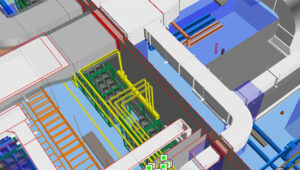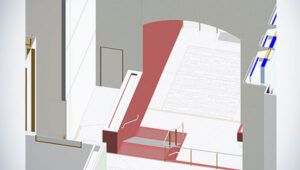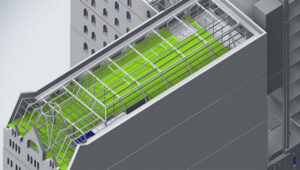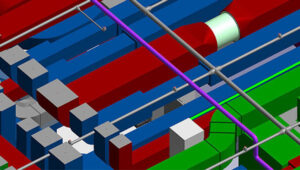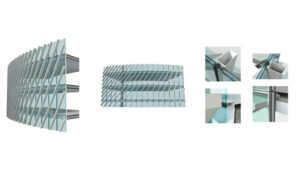Historic building restoration is a sensitive and complex procedure that calls for an in-depth knowledge of the building’s particular features, architecture, and history. Scan to BIM technology has been an innovator in the effort to preserve these architectural gems, providing previously unheard-of precision and speed. In order to preserve historical authenticity and architectural integrity, this article examines how Scan to BIM could strengthen the restoration process.
Understanding Historic Building Restoration
Historic building restoration is a specialized field that aims to preserve and restore a structure to its former glory, maintaining its historical and architectural significance. Careful study, documentation, and implementation of a number of techniques are required to restore the building while upholding its original architecture and cultural significance.
Challenges in Traditional Restoration
Traditional restoration methods often face several challenges:
- Manual Documentation: It takes time to draw and measure things by hand, and human error is more likely. This is a slow process for particularly fine antique buildings.
- Low Data Accuracy: Traditional methods might not record the building’s particular features and actual proportions precisely enough to avoid problems during repair.
- Lack of Cooperation: A number of specialists, including architects and historians, are involved in the restoration effort. Without a centralized platform, effective cooperation and data exchange may be challenging.

Introducing Scan to BIM
Scan to BIM is an advanced technique that combines Building Information Modelling (BIM) with modern 3D scanning technology to solve these issues. Through this technique, a very precise digital model of the current structure is created, giving restoration specialists an invaluable tool.
The Process
- 3D Scanning: Utilizing laser scanning services, the historic building is scanned to capture its geometry and details. This non-invasive method creates a point cloud, a dense set of data points representing the building’s surface.
- Point Cloud Processing: The raw point cloud data is processed using specialized software. This step involves cleaning and organizing the data, ensuring a precise digital representation.
- Model Creation: The processed point cloud is imported into BIM software, such as Revit, to create a Scan to BIM Revit model. This model is a digital replica of the building, containing detailed spatial information.
- Model Refinement: The model is then refined by adding architectural elements, structural components, and other relevant data. This stage ensures the model is a comprehensive and accurate representation.
- Quality Assurance: Rigorous checks are performed to verify the model’s accuracy against the actual building. This step is crucial to maintaining the highest standards of precision.
For a deeper understanding of how Scan to BIM differs in application across residential and commercial projects, explore our detailed article: Scan to BIM for Residential vs. Commercial Projects: Key Differences.
Benefits of Scan to BIM in Restoration
- Unparalleled Accuracy: It provides an incredibly accurate digital model, capturing every detail of the historic structure. This level of precision ensures that restoration decisions are based on reliable data.
- Efficient Documentation: The scanning process is swift and efficient, reducing the time and effort required for traditional manual documentation. This efficiency allows for faster project timelines.
- Collaborative Environment: The Scan to BIM Revit model serves as a central hub for collaboration. Architects, engineers, and preservation experts can work together seamlessly, sharing and accessing data in a unified platform.
- Visual Clarity: The digital model offers clear and detailed visualization of the building, aiding in better decision-making and communication among team members.
- Adaptability: The model can be easily updated and adapted as the restoration project progresses, providing a dynamic tool for various stages of the process.
Discover how Scan to BIM services streamline complex restoration projects that traditional methods can’t match. Learn more by visiting How Scan to BIM Services Streamline Renovation and Restoration Projects.
Examples in Restoring Historic Structures
Notre Dame Cathedral, Paris
One of the most iconic examples of Scan to BIM in action is the restoration of the Notre Dame Cathedral in Paris. After the devastating fire in 2019, restorers turned to a detailed 3D laser scan conducted by architectural historian Andrew Tallon in 2015. This scan, which captured millions of data points, created a precise digital twin of the cathedral. The comprehensive point cloud became a critical resource for the reconstruction efforts, guiding the precise restoration of architectural features and ensuring fidelity to the original design Source.
Lisbon Agricultural Exhibition Pavilion, Portugal
The Lisbon Agricultural Exhibition Pavilion’s restoration is another exemplary case. Specialists used terrestrial 3D laser scanning to capture the intricate details of the pavilion, followed by a detailed modeling process using Revit software. This approach allowed the team to preserve the unique architectural elements of the pavilion, maintaining the integrity of its complex geometry and historical essence Source.
Domtoren, Utrecht
In Utrecht, the 700-year-old Domtoren tower underwent a significant restoration, blending traditional craftsmanship with modern digital tools. Scan to BIM was crucial in documenting and managing the restoration process. The technology enabled restorers to accurately recreate and replace weathered stone facades, ensuring that even the smallest ornamental details matched the original construction Source.
Gain insight into the role of LiDAR technology in enhancing Scan to BIM processes and. Read more at Understanding LiDAR Technology in Scan to BIM.
Conclusion: Elevating Restoration with SmartCADD
Here at SmartCADD, we’re passionate about using the latest innovations to achieve outstanding outcomes in the restoration of architectural structures. With our state-of-the-art 3D scanning equipment and a dedicated team of professionals, we create highly accurate Scan to BIM models. These models serve as the foundation for successful restoration projects, ensuring every detail is captured and preserved.
Contact SmartCADD today and let us assist you in bringing history back to life through the power of technology and our unparalleled Scan to BIM and laser scanning services. Together, we can ensure that these historic structures continue to inspire and educate future generations.
FAQS
Scan to BIM improves accuracy by capturing highly detailed, real-time 3D scans of a historic structure. This eliminates the need for manual measurements and minimizes human errors, ensuring a more accurate representation of the building’s current condition for restoration planning.
By providing detailed and accurate 3D models, Scan to BIM helps preserve architectural heritage by ensuring restorers can replicate original designs and details with high precision. It helps maintain the historical authenticity of the structure during restoration.
Yes, Scan to BIM is particularly useful for capturing irregularities, deformations, or wear in historic buildings. The laser scanning technology accurately captures these imperfections, allowing restorers to plan corrective actions without compromising the structure’s historical integrity.

